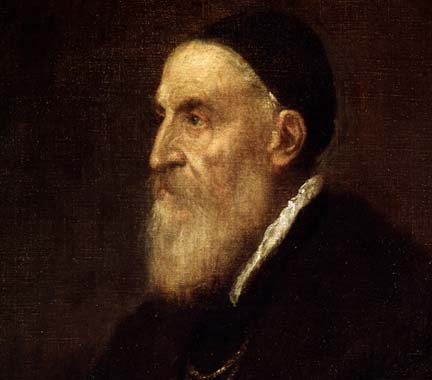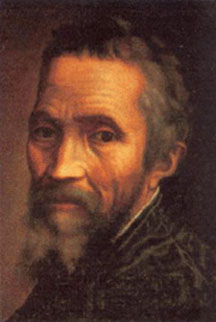Titian, Venus with a Mirror and Two Cupids, 1555, oil on canvas, 124.5 x 105.5 cm.
Is not this just the most beautiful, decedent, luxurious thing your eyes have ever laid upon? It is thought that Titian loved this so much that he could not part with it and kept the original for himself, and for his visitors to admire. Many variations and copies were made by himself and his workshop. While Peter Humfrey, the author of my research text Titian, hardly touches on his painting, I wanted to discuss it because it is the sort of painting that captivates its viewer; a timeless beauty.
I find that Venus has a very similar hair style to Diana from the previous paintings which I have discussed, Diana and Callisto and Diana and Diana and Actaeon. Although she is bedecked in jewels her skin seems to outshine them, and the ruby red jewel tones of her lips is reflected in her embroidered velvet cloak, which is barely covering her.
Titian's use of color, contrasting red with dark shadings of green, and the rich textures of silks, jewels, velvet and furs create a very real and tangible setting for the senses which engages the viewer. Venus gazes into the mirror which two cupids are holding, and she seems to be gazing at herself as if somewhat surprised and modest about her beauty.
For one of Titian's later paintings Venus is very luminescent, much more reminiscent of his Venus of Urbino. However, the expressive strokes with which he rendered the material objects around her created a vivid atmosphere, in which his later style served him greatly. This can be seen in the bottom left corner of her velvet cloak, the roughness and painterly style of the strokes lend authenticity to the texture of the fabric. This is perhaps one of the most luxurious depictions of the goddess Venus that I have seen thus far, and it is entirely unique in that it does not simply focus on her body, but also compares her beauty to the most precious of materials and stones, and she entirely outshines every one of those objects.








